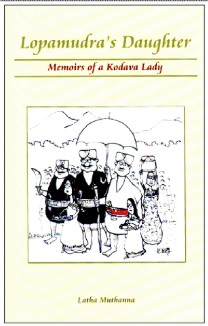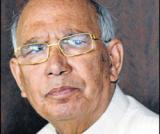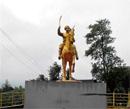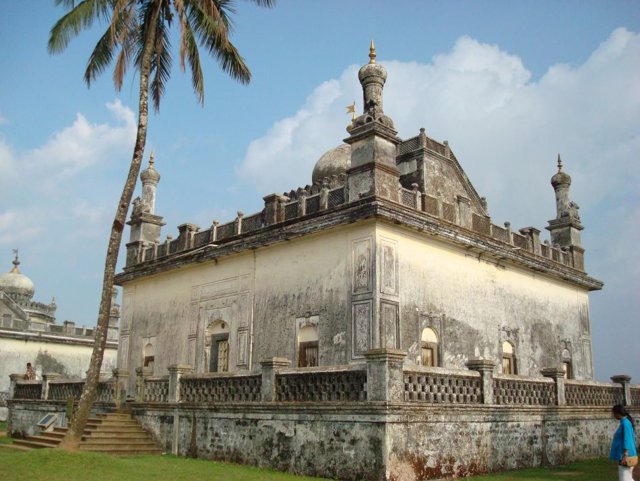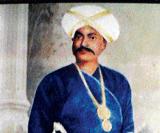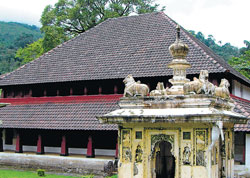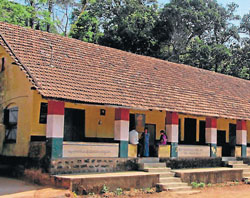HERITAGE
Mookonda Kushalappa visits Moribetta in Kodagu and discovers that the hilltop has numerous megalithic structures. It is thought that these were more of commemorative value, built in remembrance of the dead.
In the north of Kodagu district, on the way from Madikeri towards Hassan is Moribetta, the ‘hill of the Maurya’. Local people are, however, not very familiar with that name. They know well the name of a sacred lake and a temple near the same hill, both dedicated to Goddess Honnamma.
As one approaches the place, one can spot two huge granite hills touching the sky. The bigger one is Gavibetta, while the smaller one is Moribetta. Green foliage surrounds the serene place. Coffee and other plantations make up the agrarian areas. The road leads one towards the large lake that lies between the two hills. This lake happens to be the largest one in the district. It is called Honnammana Kere, the lake of Honnamma. On the right side of the road are a couple of temples; the larger one is newly built and painted while the smaller one is in ruins. In fact, the older one is hardly distinguishable from the rocky background.
The ancient temple is built of stone blocks. Amidst these blocks which are overgrown with plants is an open doorway which is not quite discernable. In the darkness within is a stone nandi, the bull that carries Shiva, and a linga. The more modern temple is the temple of the goddess in front of the lake. Both the lake and this temple are named after the local goddess, Honnamma.
The lake temple
Legend has it that Honnamma was the youngest among an influential man’s daughters-in-law. When the father-in-law told his daughters-in-law that one of them had to sacrifice her life for the common good, it was only the youngest, Honnamma, who complied. She jumped into the lake and drowned. Ever since, the lake has never gone dry. It is after her death that she was revered as goddess Honnamma, the golden deity.
On the occasion of Gowri habba, a day before Ganesh Chaturthi, the place has throngs of people. As part of the festival, a bagina or an offering is made to the goddess. This is left afloat on the lake.
During this annual temple festival, pilgrims trek up Moribetta until they reach a spot marked by a flag near its summit. The lesser-known name of the village is Doddamalte. Gavibetta has a few caves and a stairway that leads to the summit. Villagers refrain from speaking much about the ‘other hill’, Moribetta, because of talk about it being an ancient site for human sacrifices.
Shrouded in mystery
Mystery shrouds the Moribetta hill. There are numerous megaliths, although in disarray, on the hilltop. There are 50 short dolmens or portholes on the granite hill. Each of them is an arrangement of four upright flat stones with a capstone and the eastern wall has a circular porthole. These granite slab dolmens stand around four or five feet high and the circular portholes are a little more than a foot in diameter.
While some are intact, others have been broken down. Many of these dolmens have been dismantled and destroyed by treasure hunters, grave diggers, stone cutters or neighbouring farmers. Some of them have taller orthostats (large stones standing upright) beside them. Interspersed between them are cairns or piles of stones.
No human remains were found in the portholes. Broken stone circles can also be found on the granite hilltop.
These structures on Moribetta didn’t hold any remains of the dead nor were they habitable. They were like miniature houses, but these abodes were too small to live in. They contained miniature utensils and goods. Some claimed that a pygmy race lived in them. In a 19th-century published article titled ‘Rude stone monuments in all countries’, Fergusson was mesmerised by these ‘miniature toys’ of Moribetta but doesn’t give an explanation for their size.
However, as no human remains were found in the place, it is thought that these were more of commemorative value, built in remembrance of the dead. To reduce expenses, all these that were built for the dead would have been made on a miniature scale, as they were not used for practical living purposes. Historians like B L Rice, Mackenzie, Rob Cole and K K Subbayya have already explored the hill extensively. Some locals call the structures on Moribetta Kodava Kote, ‘fort of the Kodavas’.
Epic connection
These cromlechs were associated with the Pandavas, the demigod heroes of the Mahabharatha. Locals called them ‘Pandava Pare’ as well, in the past. The same name is used for large stones that were used to lay steps that led to temples and large country houses in Kodagu. Now, however, it’s a forgotten place visited only during the annual temple feast of Honnamma on Gowri festival, a day before Ganesh Chaturthi.
Six miles from Somwarpet is another place called Morikallu, also known locally as ‘Pandava Bande’. This is a small granite hillock with six dolmens, of which four were well preserved and surrounded by paddy fields. Stone circles surround all these dolmens. The shrine of Male Sartavu, another Kodava temple, has six stones; they are said to have been dedicated to the five Pandava brothers and their wife Draupadi.
In South India, anything ancient or unknown would be quickly attributed to Brahma (Brahmagiri, the ‘hill of Brahma’ or Brahmadesam, the ‘country of Brahma’), the mythical Pandavas (places called ‘Pandava Pare’ or ‘Pandava Bande’) or the historical Mauryas (Moribetta ‘hill of the Maurya’ or Morikallu, ‘rock of the Maurya’).
According to Rob Cole’s book, Kodavas have an ancient belief that the Pandavas were the original owners of the earth who rented out land to agriculturists. On Bisu Changrandi (Vishu), also called Edmyaar 1, the new year of the Kodava calendar, Kodavas start farming their lands without fail. This is because they believed that if they don’t, then the Pandavas would come down from their celestial abode to reclaim their lands.
In his 1870-book ‘Gazetteer of Coorg’, Richter speaks of this picturesque tank, Honnammana kere, which is three miles from Somwarpet, but doesn’t mention its name. He talks of a version of the legend associated with the place. Malla Shetty of Yelusavirashime was the father-in-law who vowed to build this tank.
Sacrifice
But after its construction, there was still no water. It was suggested that animals be offered in sacrifice to appease the gods but to no avail. Goddess Ganga appeared in front of the merchant and asked him for a sacrifice. So he approached his daughter-in-law Akkony whose husband was away. Akkony took leave of her child and parents and entered the tank to drown in the rising water.
Her parents and husband got upset upon hearing this. Richter also writes about a stone inscription found in the place. It reads in Kannada, “King Andany has ordered this tank to be built on Tuesday the tenth day of the month of Phalguna in the year Parthiva.
“This was written by Venkadasya Mallia Bomarsia at the time of Basawalinga Deva Raja Vodea”.
Lately this stone inscription has been cemented on the ground in front of the new Honnamma temple.
King Andany mentioned here must have been a local ruler while the person mentioned at the end must have been the Lingayat (Basawalinga) Raja Devappa (Deva Raja Wodeyar, 1770-1774) of the Haleri dynasty
source: http://www.DeccanHerald.com / Home> Supplements> Spectrum by Mookonda Kushalappa / November 26th, 2012
